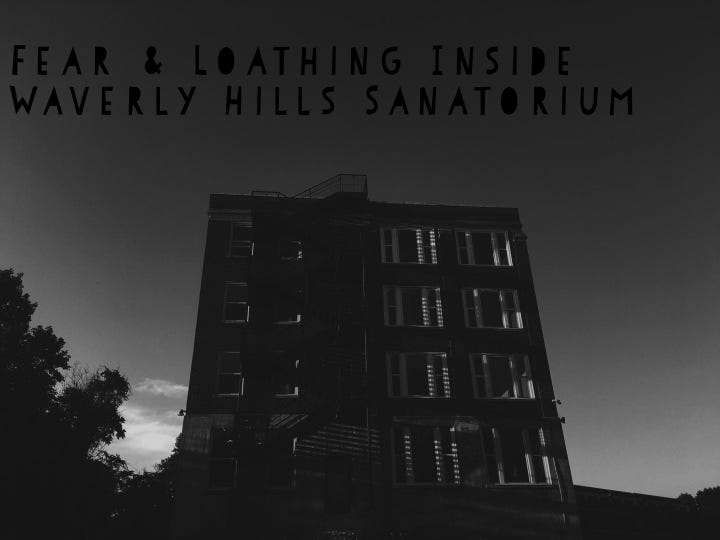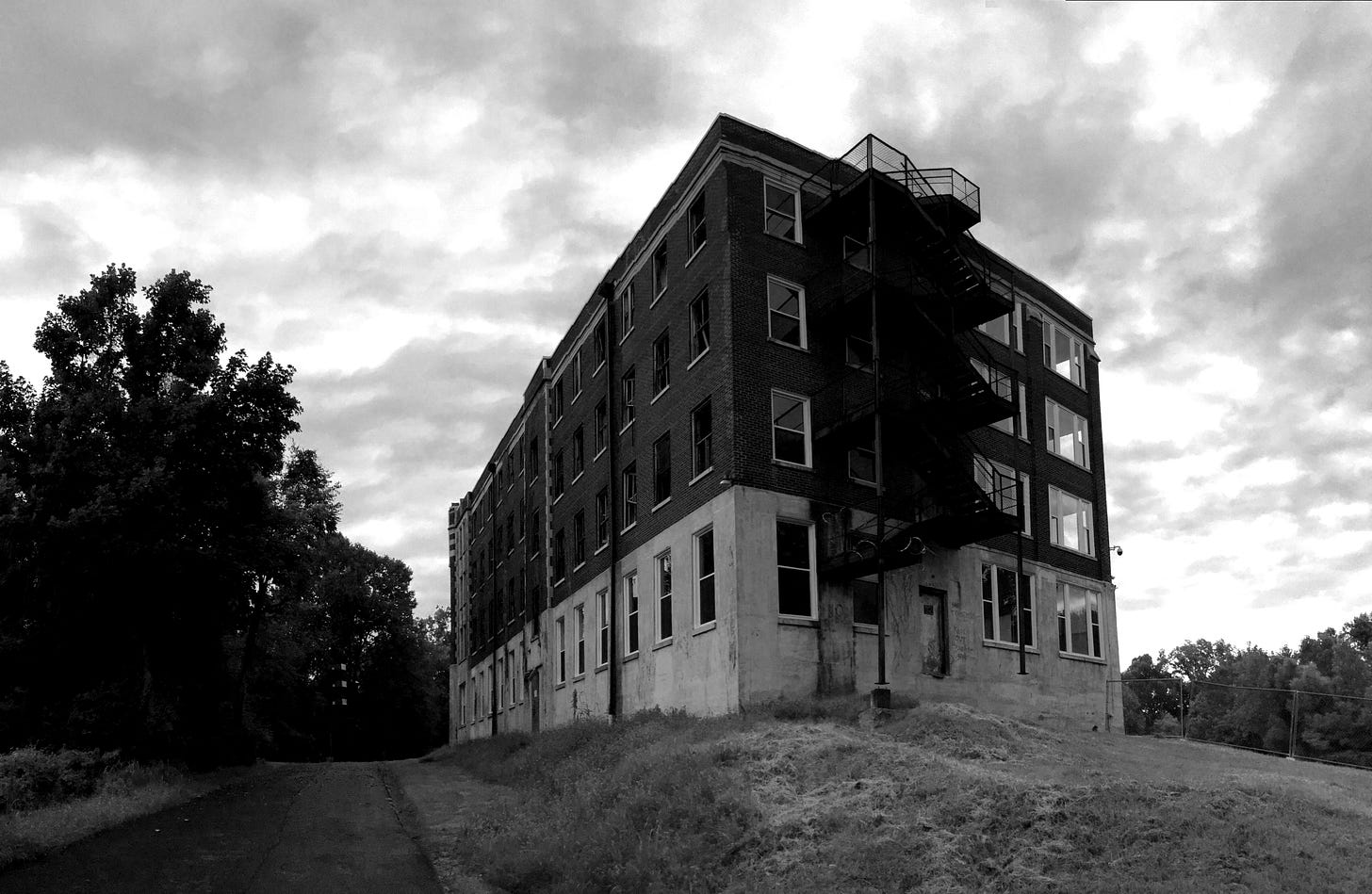Fear & Loathing Inside Waverly Hills: Choking Echoes and Broken Reverence
Documenting two terrifying sessions at one of America’s most infamous haunted locations—and why I may never return.
Waverly Hills Sanatorium in Louisville, Kentucky doesn’t just beckon—it grips you. I’ve roamed its cracked halls over ten times, each step charged with something raw. A full-bodied apparition once crossed my path, fading into shadow. Footsteps trailed me in the quiet. A ball rolled to my feet from nowhere.
But two nights—2013 and 2016—still pulse with fear. Both marked by choking. Both caught on tape. Both still shake me. Waverly’s ghost tales hum, weaving through my story, but its history—heavy with loss—demands respect.
My last visit, though, sparked something else: loathing. A betrayal of its soul that might keep me away for good.
Let me explain.
Waverly Hills Haunting: A History of Hurt

Waverly opened on July 26, 1910, as a tuberculosis hospital—built for 40 patients but swelling to over 400 by the 1920s. TB ravaged Louisville, killing one in five at its peak. Patients coughed blood, wasting away in open-air wards through snow and wind, hoping fresh air would heal them. Some endured brutal treatments—balloons inflating lungs, rib removals—often fatal.
Death came relentlessly: one per day, sometimes one per hour. The “body chute,” a 500-foot tunnel, discreetly moved supplies and corpses, shielding the living from despair. No exact death toll survives—1937’s flood destroyed most records—but estimates range from 6,000 to 9,000 lives lost. In 1945 alone, 152 patients died. Not the 63,000 some ghost-chasers still tout.
By June 1961, antibiotics cleared the wards. In 1962, Waverly reopened as Woodhaven Geriatric Center for the elderly and disabled. But by 1982, neglect—overcrowding, bedsores, filth—shut it down. Despite rumors, Waverly was never an “insane asylum.” It was a house echoing with suffering, etched into every peeling wall.
Ghost Lore of Waverly Hills: Shadows and Growls

Waverly’s walls whisper stories. Room 502 is said to house the spirit of a nurse who died by suicide in 1928—some say due to an unwanted pregnancy, others say despair. The body chute creaks with phantom slams and groans, tied to morgue carts used for state-mandated autopsies.
Shadow People drift through the halls. The Creeper slinks along walls, prickling skin. Big Black—a suffocating, light-devouring presence—swallows hope. I recorded growls in 2016 I’d credit to it. And then there’s Timmy, the mischievous child spirit of Waverly lore, who makes several appearances in my footage.
These aren’t my inventions. They’re Waverly’s breath—steeped in decades of myth, witness accounts, and dread.
2013: A Spirit Box Choke Unsettles
In 2013, the air turned sharp. Tyra Newsome of In Nomine Paranormal Research brought me along. Mike Flickner, then a guide at Waverly and part of Southern Indiana Ghost Hunters, led us to the first-floor lobby for a spirit box session—a device used in ITC (Instrumental Trans-Communication), a method of attempting to capture voices or messages from nonphysical sources.
He called for “Timmy.” The box crackled—fragments of names and static. Then Tyra began coughing—hard. And the box hissed back one word: “choke.”
Was it dust? Coincidence? Something more? I don’t pretend to know. But my friend Jeff Rocker caught it on tape, and that moment lingers. That night felt like a violation, a dark confirmation. The questions still hang, answers just out of reach.
2016: Choking Shadows Strike Again
On July 26, 2016, fear turned personal.
I was in the old hospital lobby with a small group, running another session with a spirit box. Meanwhile, April Slaughter—psychic medium and respected researcher—led my daughter and others to the second floor.
Our device picked up Timmy’s name again. But upstairs, something stirred. My daughter later described a shadow figure lurching toward her. She froze—and couldn’t breathe. It felt like invisible hands choking her.
Three years after Tyra’s attack. Same building. Same name. Different floor. Different target. Coincidence—or continuation? Timmy’s bad behavior?
As the night deepened, we switched to EchoVox, an ITC app I trust for raw, real-time spirit replies. The concourse lights shut off. Darkness swallowed the hallway. Then came a growl—low, guttural, unmistakable.
EchoVox growled back. Like it knew.
Big Black filled my thoughts, its void-like presence echoing in the responses. Slams. Footsteps. Disembodied voices. Static chaos. But my daughter’s choking—that scar runs deepest.
Video:
Paranormal ITC: Truth Beyond the Noise
If you ever visit Waverly, know this from my years of experience: it speaks clearest when you ditch the gear and sit in the dark. Unplugged. Exposed. Still.
That’s when shadows flicker. That’s when clothes get tugged. That’s when Waverly breathes.
Forget meters. Forget clean recordings. Between planes, trains, critters, and Louisville humidity, Waverly is acoustic bedlam. A “pristine” ghost hunt? A myth. Don’t chase it—or you’ll miss what matters.
What matters is reverence. For the patients. For the pain. For the dead. Honor that, and maybe what lingers will honor you back.
But lately, Waverly’s caretakers seem to have forgotten this.
Waverly’s Fall: Loathing the Carnival

There was a time when walking Waverly’s halls felt sacred—a privilege to tread where so many lives ended. I came to listen. To feel. To bear witness.
But my last visit, in April 2023, broke my heart.
Halloween props now clutter the first floor year-round—no longer reserved for October. Demonic doctors. Tortured mannequins. Rubber limbs splashed with fake blood. The gift shop sells haunted souvenirs like it’s a theme park. The ghosts who linger—patients, nurses, children—deserve better than being props in this mockery.
It’s a bucket of gross.
Disrespectful to those who suffered. Disingenuous to whatever remains. Waverly’s not a carnival. It’s a grave. This shift feels like exploitation, not exploration. A betrayal of every soul that breathed its last here.
That’s why I may never go back.
Gratitude in the Charged Echoes

Tyra’s choking. My daughter’s attack. They’re not evidence. They’re experiences. Threads in Waverly’s haunted weave. The Creeper. Big Black. Timmy. The nurse in 502. They hum beneath each step I’ve taken—fueling questions, never answering them.
Every visit gave me something. Even the fear. Even the bitterness.
Maybe we’re the ones haunting Waverly—calling too loud, too public, too bold.
Till the next whisper,
— Evel Ogilville







